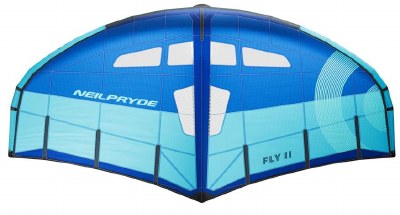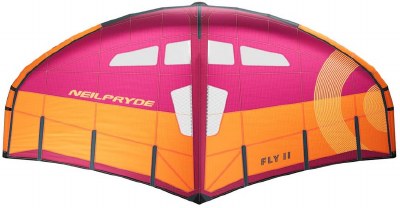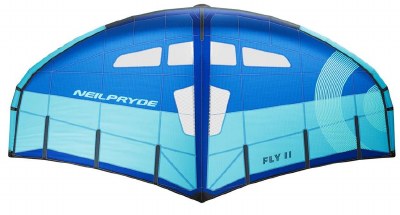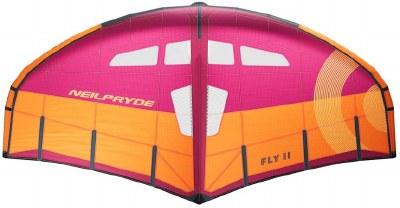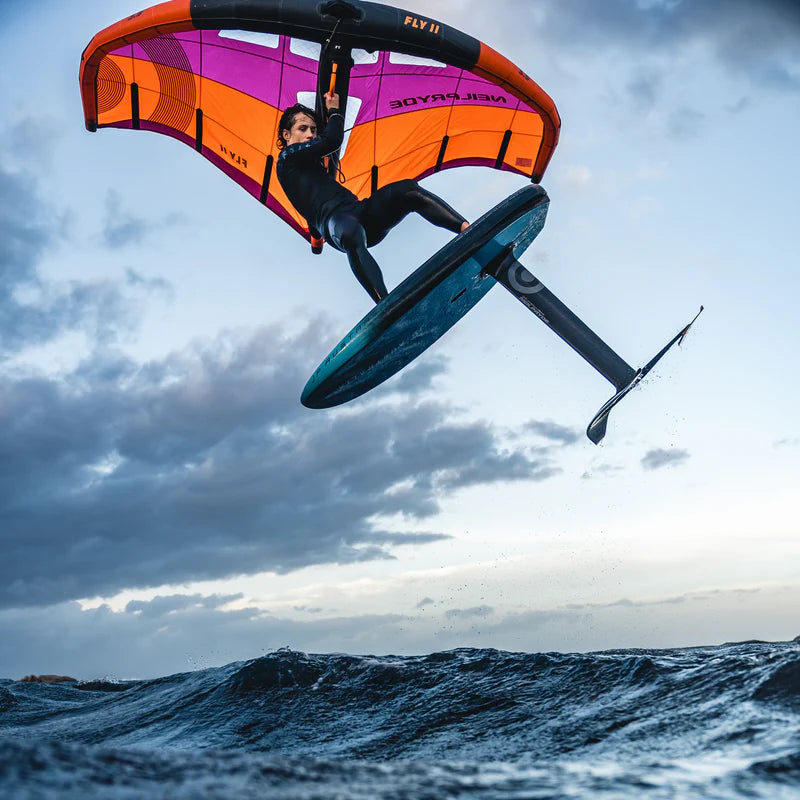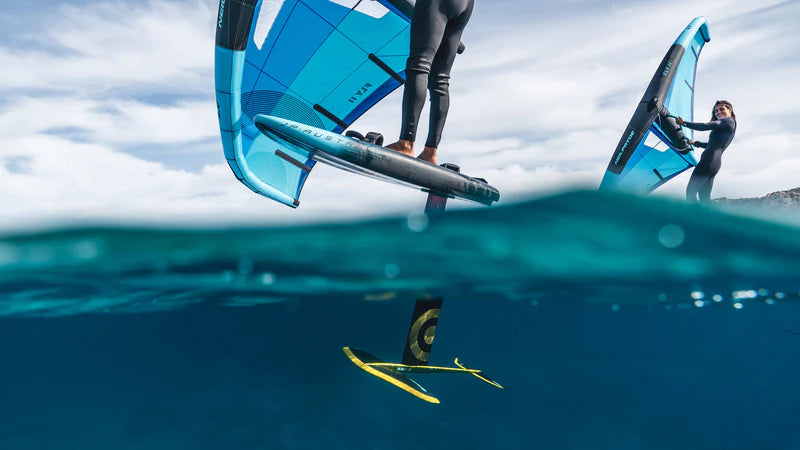The 2024 FLY II represents an evolutionary leap from the original model that features new materials, even more advanced 3D flying shapes, and a host of enhancements aimed at improving performance and enhancing the user experience. Continuing with the unique high lift coefficient concept, it features an even stiffer airframe and a new twist profile, greatly enhancing handling and control in high wind conditions. The canopy tension distribution, originally derived from windsurfing sail design, has been fine-tuned to improve upwind speed and handling through upwind maneuvers. The dihedral front profile has been reshaped for increased stability when sheeted in, particularly beneficial for harness-equipped riders. Additional Leading Edge (LE) segments at the wingtips not only reduce drag but also provide added stiffness, enabling the wing to point higher. The vented strut has been updated with an additional stiffener at the Leading Edge (LE) in the center, enhancing stability in the area ahead of the fill panel, making the wing much more forgiving during tacks. The FLY II is now constructed entirely from Teijin LE dacron, greatly enhancing its shape durability. The trailing edge panels forward of the frame are made from Challenge Code 95 for exceptional stiffness and long lasting shape control. The back windows now feature a dyneema X-ply for the optimum balance between visibility, light weight and structural integrity, while the front windows are clear PVC. The windows have been redesigned and repositioned to improve visibility. The wide range of size options between 4.0 and 6.0 are unique to the Fly II. We have simplified the sizing between 1.8 to 3.5 compared to the previous model to make the selection process much easier.

